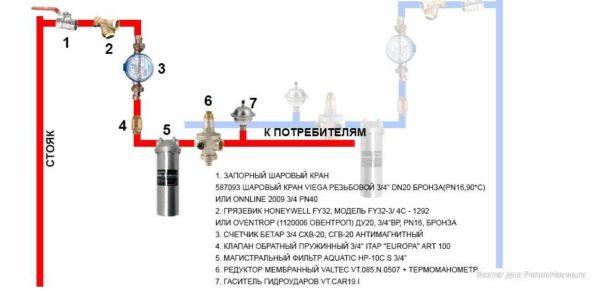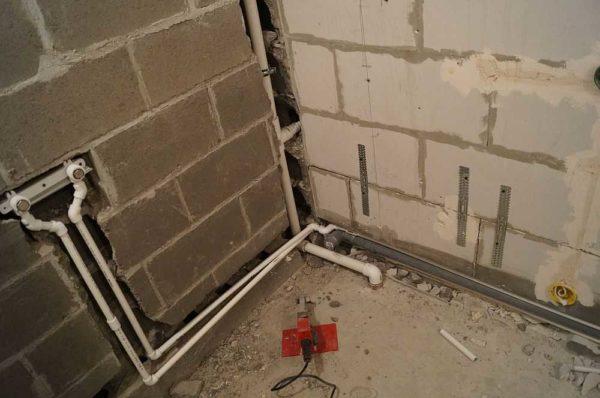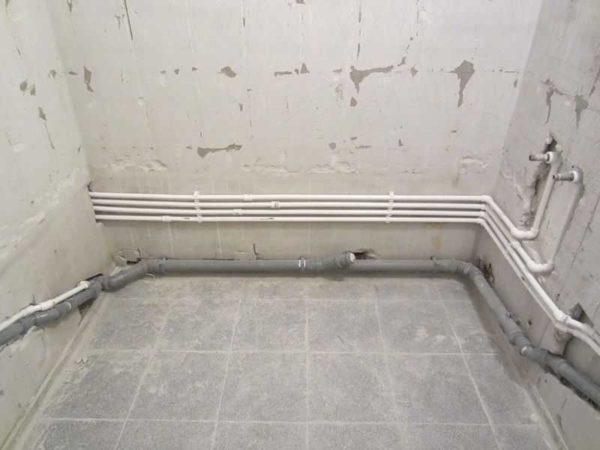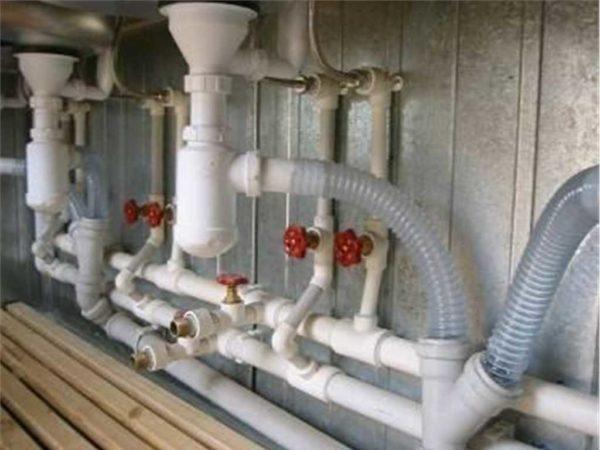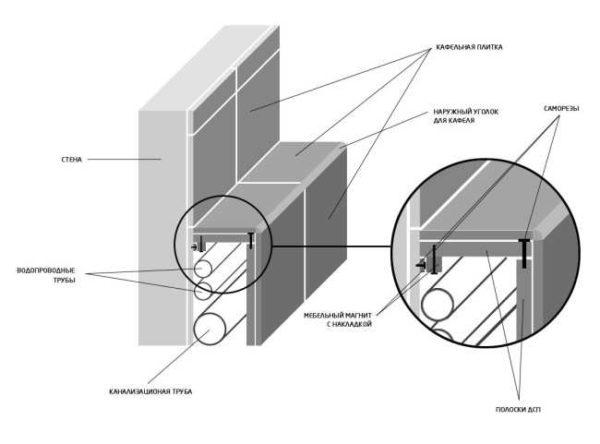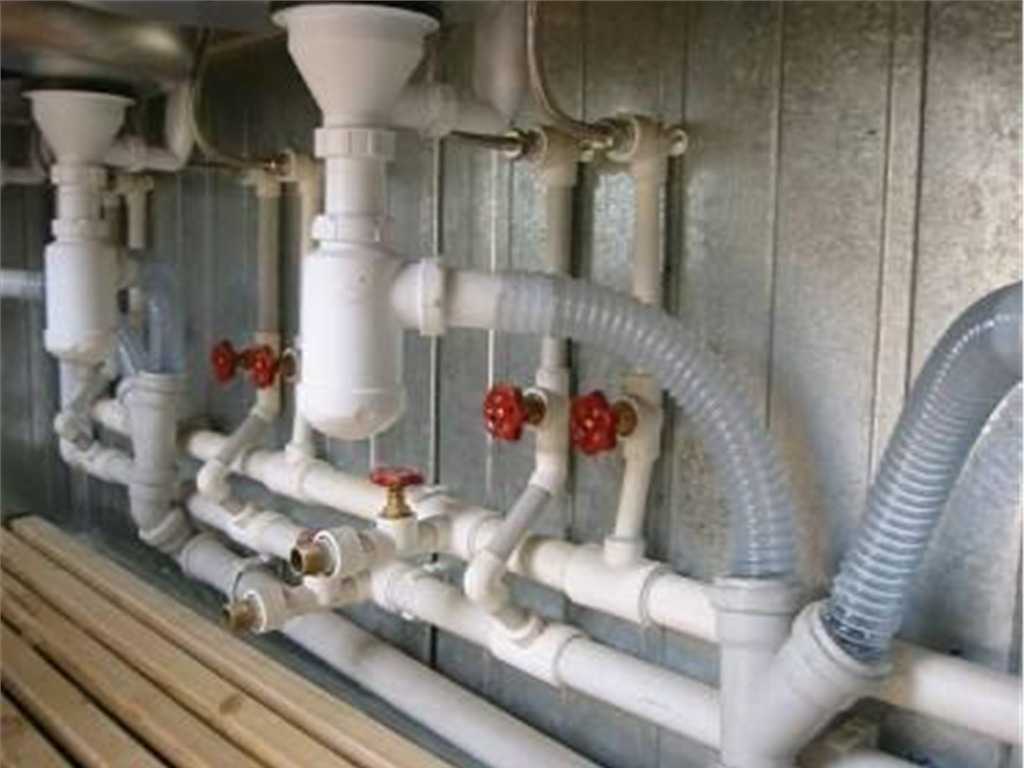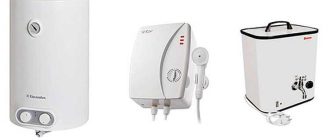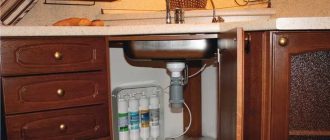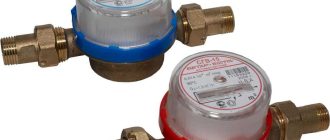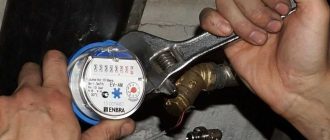Self-installation of hot and cold water pipes in an apartment or house is not easy, but it is real. Even if you are going to hire a specialist, you should know the main points yourself – control does not hurt.
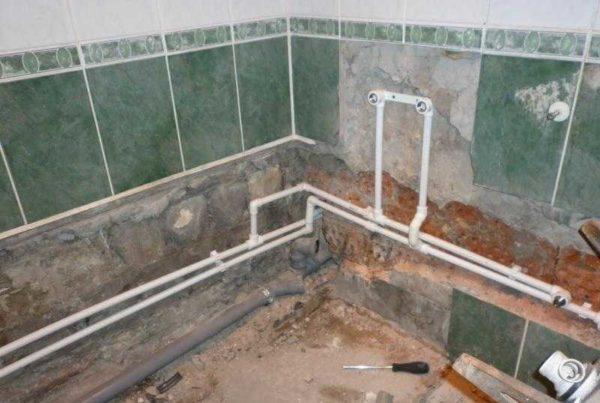
Artikli sisu
How to develop a scheme of plumbing installation
First determine the places where all the consumers of cold and hot water will be located. It is better to do everything on the plan, but you can also “on the spot” mark. Not only the geometric dimensions of the devices are important, but also the exact location of the place where you need to bring water.
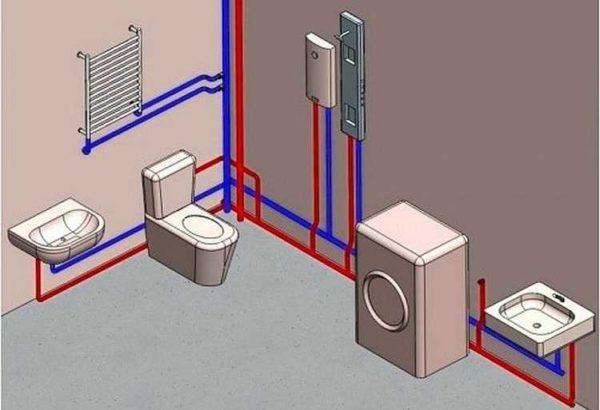
Many appliances are connected to the water network with flexible hoses. Then the end of the branch from the main line can be 10-20 cm before the appliance. The main thing is that the connection point should be easily accessible. This is necessary for convenient and quick maintenance of the connection. This method of connection is realized more easily – there is no need to accurately calculate the length of the pipe.
There is also a rigid water supply to sanitary appliances or household appliances – pipes to the very entrance. Such a connection is more difficult to perform, so this type of wiring is less common. Mostly so connect gas water heaters (columns), bathroom faucets, which are fixed to the wall.
External or concealed wiring
First of all, you should decide on the type of pipe laying – they will go on top or hidden in the wall or floor. Concealed wiring in the bathroom, toilet is good from an aesthetic point of view – nothing is visible. But the pipes are inaccessible, to eliminate the leak will have to break the wall, which is not at all happy. Therefore, in the wall try to lay only whole pieces without connections – less chance of leakage.
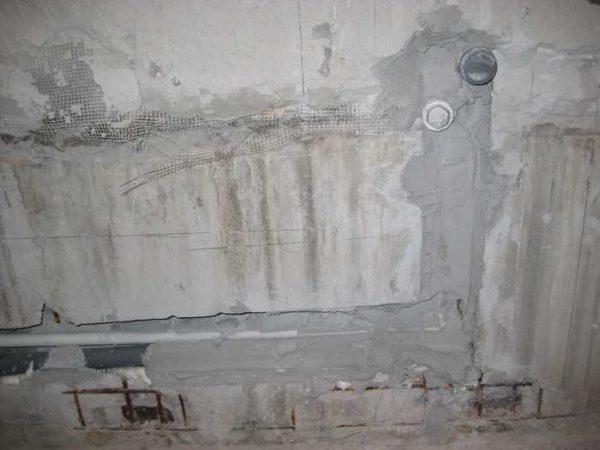
There is another difficulty in the hidden laying of water pipes – the need to have channels in the wall (strobes), in which the pipes are laid. First, not every wall allows you to do in it shtrobya. For example, in panel houses, where the thickness of the wall is only about 10 cm to make a channel depth of 5-6 cm is definitely not worth it. The slab will lose a significant part of the load-bearing capacity. What this threatens to explain, probably, do not need to explain. Secondly, laying the holes in the wall – this work is not the easiest, even if you have a perforator takes a lot of time. So the disadvantages of this option are more than enough.
Another type of hidden pipes – behind a false wall. To do this, having set back some distance from the main wall, install a frame, and on it plasterboard, on which then lay tiles. The second option for a false wall is made of plastic panels.
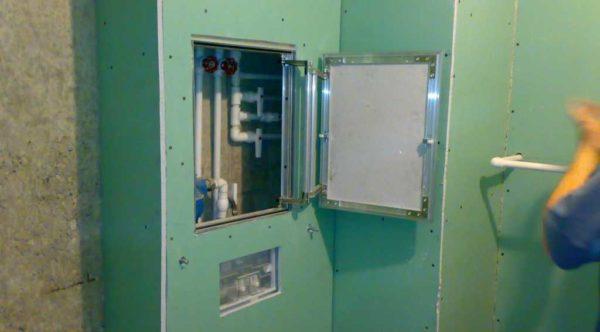
External pipe routing from a practical point of view is better – everything is in plain sight, available for repair at any time. But the aesthetic side suffers. To hide communications all of them – water supply and sewerage – try to lay close to the floor, then build up a plasterboard box with a removable lid or top part. So all the pipes have free access, and they are almost invisible.
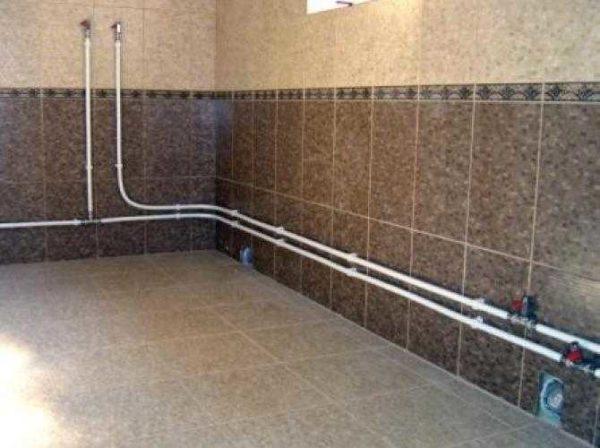
Laying method
In an apartment or a house, the water distribution is done in two ways – sequentially connecting all consumers or putting a collector, from which each of the devices goes to a separate pipe. Both options are not without disadvantages.
When connecting the pipes in series, the pipes go little, but if more than two plumbing appliances are connected in a row, when they work simultaneously, the pressure may be insufficient. This type of distribution is also called tee – all branches from the main trunk pipe are made with the help of tees (sometimes – crosses or angles).
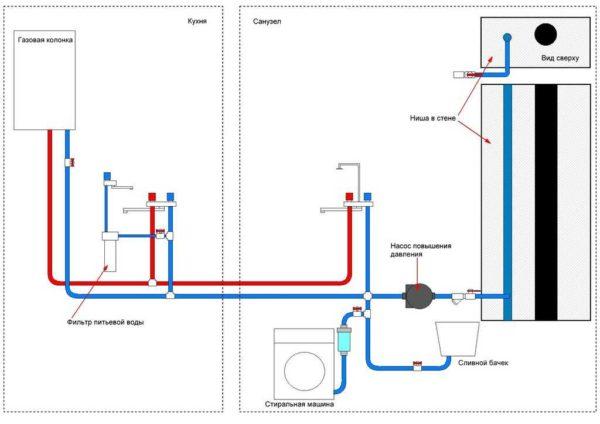
At the collector distribution of water pipes goes a lot, in addition, additional equipment is required – a collector on the water supply. So this scheme of piping – an expensive venture, but the pressure on all connected appliances, regardless of the number of working, the same.
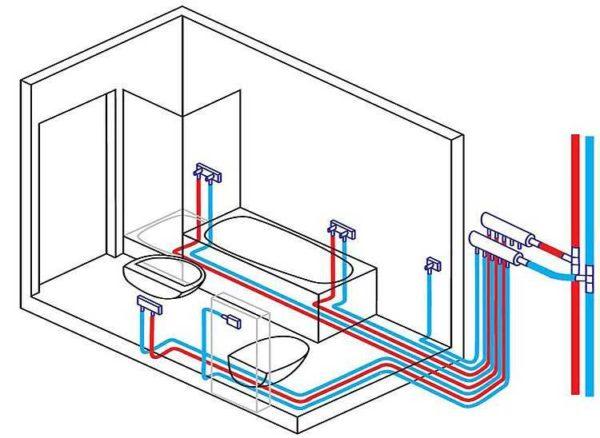
There is one more nuance: a large number of pipes must be laid somewhere, and compactly, and this is not easy at all. Therefore, this type of wiring is more often used for concealed or open wiring, but in places that require such a connection or can be closed by furniture.
For example, in the bathroom or toilet only two devices are connected. You can make a serial connection there. In the kitchen, a column (boiler), a tap on the sink, washing machine and dishwasher are connected. In this case, it makes sense to put a collector in the kitchen, and from it to all consumers separate branches of water supply. This method of connection is called mixed – part of the water supply is divorced with the help of tees, part – from the collector.
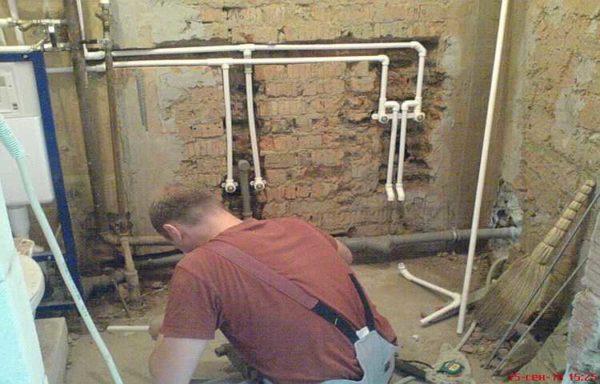
Pay attention to the fact that if you simultaneously make a cold and hot water distribution, the pipelines are laid in parallel. In case of buried supply it makes sense to wrap the DHW supply in thermal insulation – then the water will really be hot and you will not heat the walls. If the pipes are polypropylene or plastic, it is not so critical – polymers have a low heat transfer coefficient. For metal (any – steel, stainless steel, galvanized, copper) thermal insulation is very desirable.
Pipe routing: the rules
As in any business, in plumbing has its own rules. There are they and in laying water pipes. If you are going to do the plumbing for yourself, whether to comply with them or not is up to you, but it is better to do everything correctly. The rules have their own logic, which is adhered to by most:
If you look closely, you will see that most of the plumbing is done exactly according to these rules.

Which pipes are better for plumbing
Unambiguously say what pipes are best to do the wiring can not – there is no ideal material, there are more or less suitable for these conditions. Let’s dwell on the most popular options, their advantages and disadvantages:
Polypropylene pipes
The option is good for everything, except for a large thermal expansion – up to 5 cm per 1 meter, which is a lot. With a long route, it is necessary to install a compensator or use reinforced pipes. Their thermal expansion is many times less, but their prices are higher. For hot water should definitely use reinforced pipes, but here is fiberglass or foil – it’s up to you. DHW pipes can be made ordinary PP pipe for cold water – here the thermal expansion is not so critical.
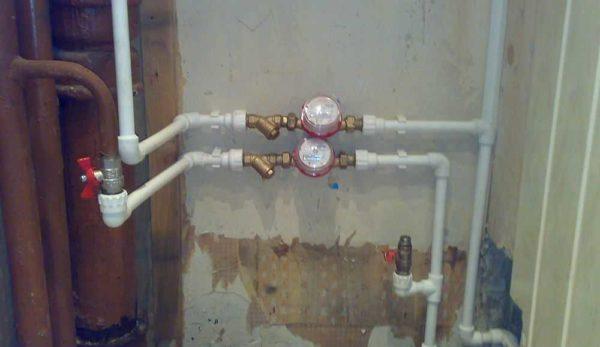
Read about the choice of polypropylene pipes here.
Another point, relevant, if the work is carried out by your own hands, you are going to do hidden laying of communications – the quality of connections. In principle, in soldering polypropylene is nothing complicated, but without experience you can “make a mistake”, as a result, after some time the connection may leak. In the absence of experience in welding polypropylene to hide connections under the finish is very undesirable. In this case, it is better to choose an open method of laying.
Plumbing polypropylene pipes in the bathroom and toilet has many positive aspects:
- properly made connection turns out monolithic;
- no narrowing of pipeline diameters in soldering points;
- high maintainability;
- long service life;
- ease of installation.
In general, not for nothing this material has recently become so popular.
PVC for plumbing
When installing PVC pipes, an adhesive connection is used. There is a special glue that dissolves the top layer of the polymer. They are lubricated with both glued parts, pressed one to the other and held for some time. As a result, the connection is almost monolithic, strong and reliable.
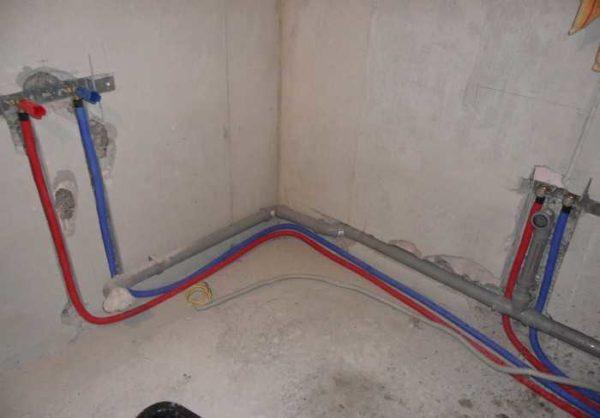
There are two types of joints: butt joint, when two sections of pipe are joined, and with the use of fittings. Fittings are easier to work with, but the joints are narrower. At the butt joint there are no narrowings, but it is much more difficult to make qualitatively.
In principle, all the pros and cons here are the same, but a few minuses are added – suitable only for transportation of only cold media – no more than +40 ° C, that is, for DHW will have to use other pipes. Scratches and chips reduce the strength of the pipe, so the threaded connection is excluded.

Metal-plastic
Plumbing from metal-plastic pipes is also suitable for DHW – it can withstand temperatures up to +105°C. A positive difference from all of the above is its high plasticity – these pipes can be bent with a fairly small radius. This simplifies and cheapens installation (fittings are expensive).
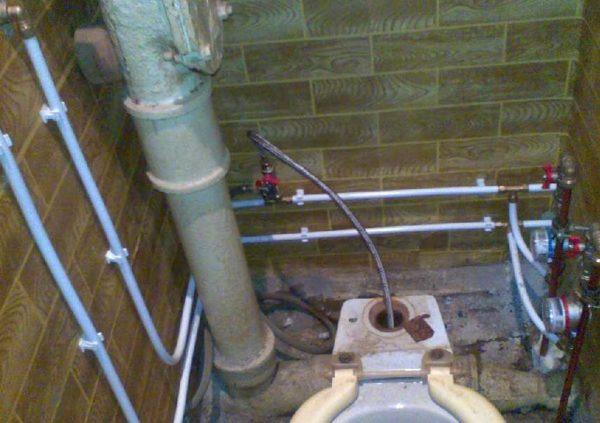
The minus of using metal-plastic pipes for plumbing is a strong narrowing at the joints – in the fittings. This leads to a significant decrease in pressure in the system. This is what limits their use.
Examples of schemes
Piping in each apartment, even in a typical house is individual – differently arranged plumbing and household appliances, of course, and the scheme will be different. In fact, everything is not so difficult, you just need to determine the basic parameters of the scheme – where you need to bring water and the type of wiring – in parallel you will pull or in series. Further everything already dictates the position of consumers. To be a little easier to add a few more schemes and photos.
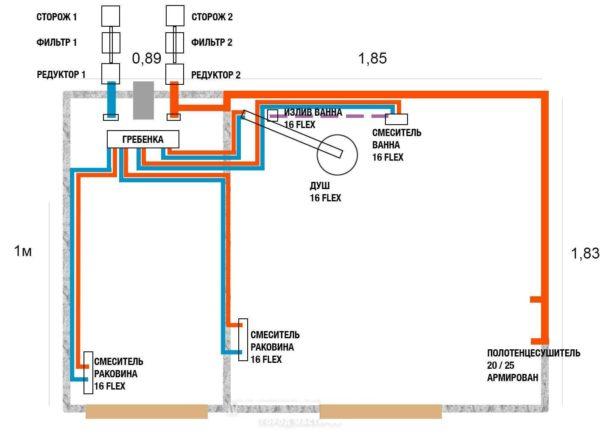
The peculiarity of this scheme – on the towel dryer goes a thicker pipe from the DHW. This is done to provide better heating.
